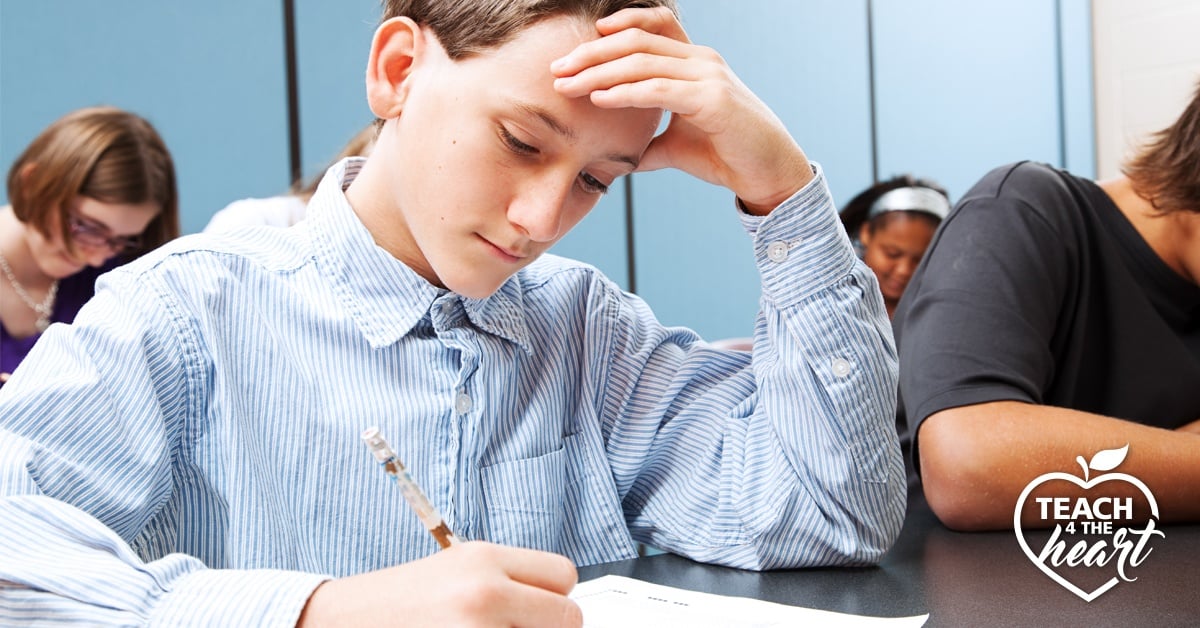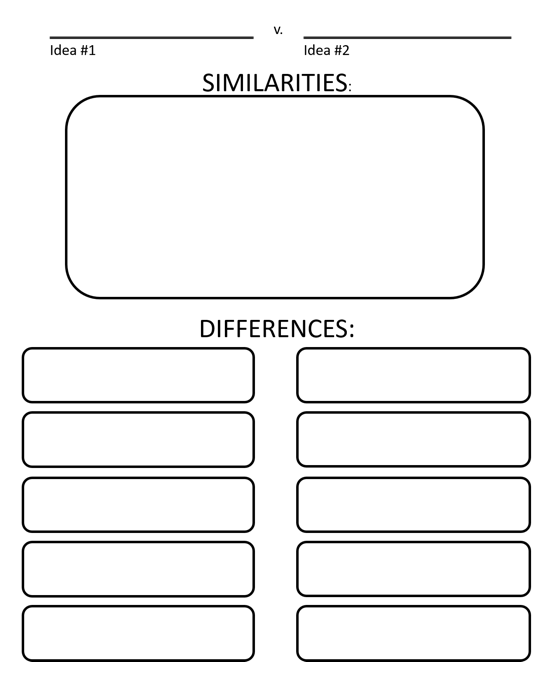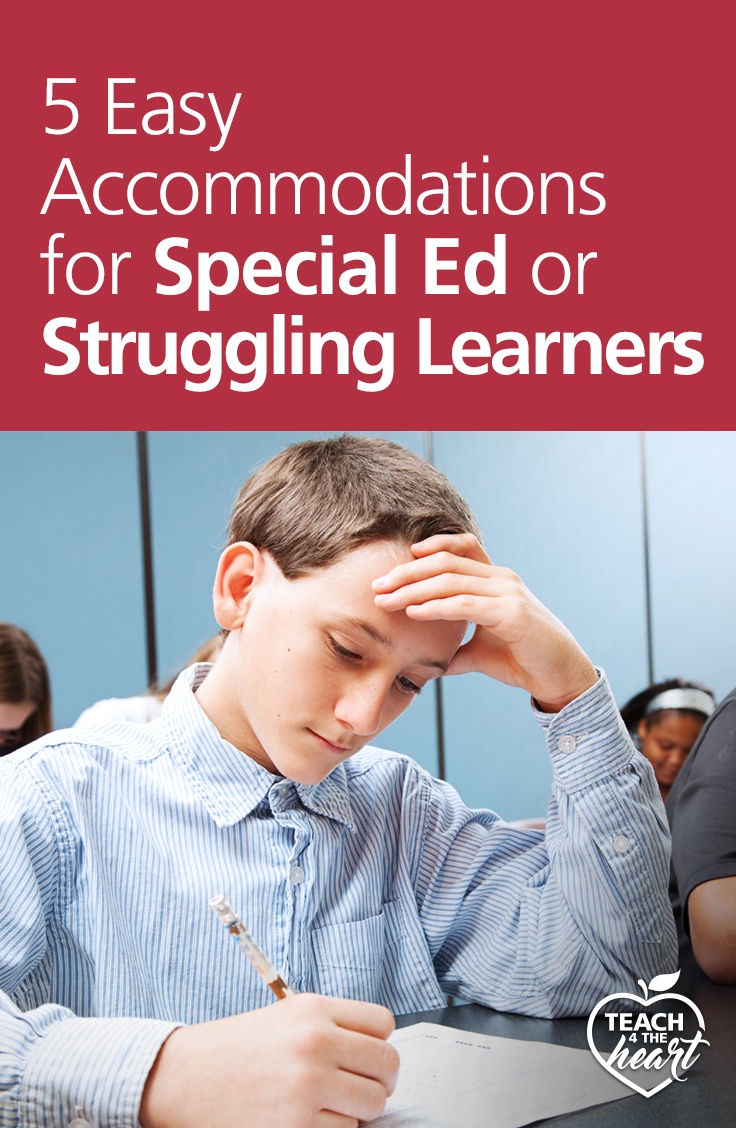Thanks to Alexx Seipp, Customer Experience Manager here at Teach 4 the Heart and creator of Genius Fishes for contributing this article.
Subscribe to the Teach 4 the Heart Podcast.Differentiation, universal design for learning, accommodations, and modifications are huge buzzwords in teaching right now.
Many districts are moving away from special education classes and putting their special education students into general education classrooms. This can leave general education teachers with a diverse group of learners who all have different needs.
Often this shift does not come with more prep time. How is an already overworked teacher supposed to meet the needs of their struggling learners? Fear not! I have some ideas for you that take little to no extra time to implement.
Simple Accommodations to Help Your Struggling Learners
- Graphic Organizers: These were one of my number one tools as a special education teacher. My students were able to do the same kinds of essay as general education students (persuasive, compare/contrast, etc.) if they had the proper graphic organizers to assist them with writing. Please do not hand your special education students a blank piece of paper and ask them to write. Start with a graphic organizer to help them organize their ideas. With writing pieces, you can match these organizers to sentence frames (see below). Graphic organizers can be used in almost every class. They can be used to organize the steps in solving math problems. They can be used to research the different aspects of a historical figure’s life. They can keep track of experiment results. This method doesn’t require any additional teaching time; you can make graphic organizers available to all your students and those who need them can use them. Graphic organizers also give students great visuals to remember information. I suggest using the same graphic organizers as often as possible with different assignments so students get used to certain formats. The hope is that one day they will replicate these graphic organizers for themselves when needed.
- Sentence frames and sentence starters: These can be used alongside or independently of graphic organizers. For example, I would have my students research historical figures by filling out a graphic organizer that had labels like birthdate, childhood, major accomplishments, etc. Then, I would give my students a paper with sentence frames in an essay format that said, “______ was born on _________. ______’s childhood was spent ______________.” The students would simply match up information from their graphic organizer to their sentence frames. You can provide more or less sentence frames depending on the child’s level. Some students may only need a sentence starter at the beginning of each paragraph and can write the rest independently. Sentence starters and frames are also great for encouraging discussions. You can have them posted in the room and require students to use them when answering questions or pass out a list of them to discussion groups. With so many states adopting common core standards, sentence starters and frames that require students to use evidence are very helpful. For example, “I think _____ because page ____ says _________.” Again, these don’t require much additional teaching time. Discussion sentence frames can be posted and reviewed occasionally and provide help to your special education students all year long. If you don’t have time to create graphic organizers and sentence frames, you can find some at my store at here.
- Summarizing: This is an activity that will help all of your students, but especially your struggling learners. If you teach a class that requires note-taking, have your students pause when they’ve written about one page of notes and have them write a one-sentence summary with the main idea. When reading novels, I would have my students write a one-sentence summary after each chapter. They can also write one sentence summaries at the end of class about what they learned that day. In each case, it requires them to immediately review the information they have learned and give themselves a nugget of information to anchor their learning. I also used this with discussion groups when I realized my students weren’t really listening to each other. After discussions, I would randomly call on students to give me a one-sentence summary of what their partner had said. You will be shocked at how many struggle to answer the first time you do this, but then they learn to really listen to each other. The beauty of this activity is that nothing extra has to be planned ahead of time and it only requires a few extra minutes to your lesson. You can combine one-sentence written summaries with sentence starters for students who need it.
- Color-coding: This is especially helpful for your visual learners. Color-coding can be used in everything. Write out the steps of a math problems and use a different marker for each step. Use a green highlighter to highlight vocabulary words and a pink highlighter for math formulas. Use a blue highlighter when taking notes about a person and a yellow highlighter for an event. Use a different color for each character when taking notes about a novel. They can even make themselves a “key” before they start taking notes on a particular chapter and use very specific color-coding. For example, George Washington = blue, Patriots =yellow, and Loyalists = green. If students use their notes to complete assignments or take tests, they will be able to find their information much more quickly.
- Learning goals: This is one of the easiest to implement. After passing out as assignment, if you notice your special education students are struggling or taking longer than usual, you can shorten the work they need to complete. You could cross out more challenging questions. Of course, you need to make sure this is in-line with grading policy or their Individualized Education Plan (IEP) and that you are still getting a good sample of their work. In some curriculums, particularly in math, students are required to solve twenty of the same types of problems for practice. If it takes a special education student twice as long to solve these problems, you can cross half out so he only does ten. You can also use this strategy even if you don’t shorten the child’s work. If a student is having trouble getting started, you can draw a line behind the first five problems or fold the paper over so the student can only see the first two questions. Tell the student you will be back in 5 minutes to check those questions only. Students can get overwhelmed by the number of problems or questions on a page and having a specific goal can really help.
As you implement a few of these strategies into your classroom, you will find which of them are most effective for certain students. This will jumpstart your thinking into additional accommodations and modifications you can make for specific assignments.
You will start to look at your special education students not as burdens, but as opportunities that are making your teaching better for EVERY student.




Great ideas that I will share with the Middle School teachers at my school.
So glad you found it helpful!!
Excellent ideas. Thank you for sharing. After my Easter break I will implement the colour coding strategy into my teaching. Another good strategy to use is the KWL chart.
Wonderful to hear! 🙂 Thanks for your feedback!
This is awesome. I am excited because now I know how to differentiate in my class. Thank you so much for this article.
You are so welcome! Thank you for that kind feedback.